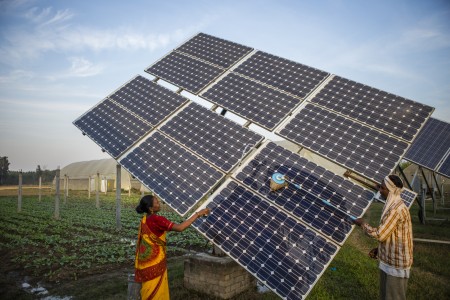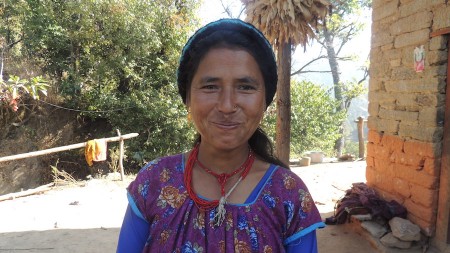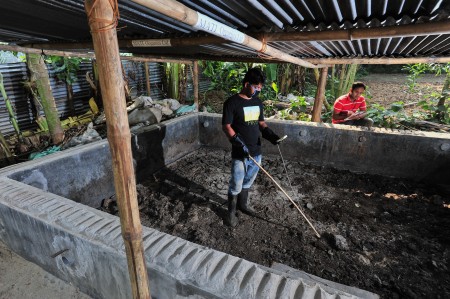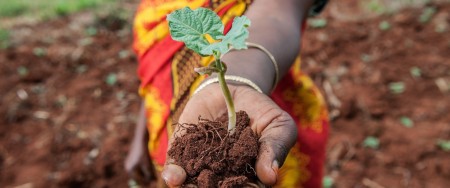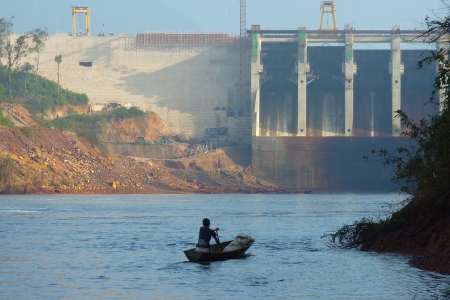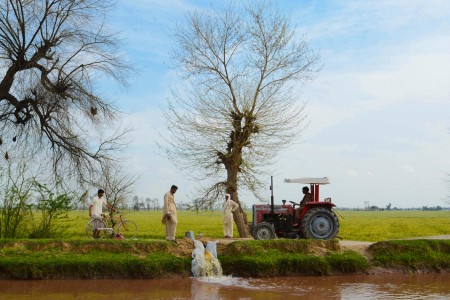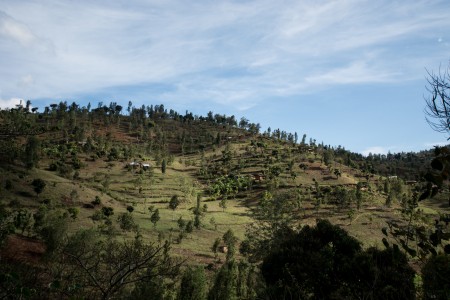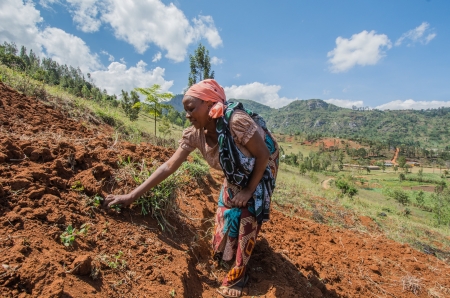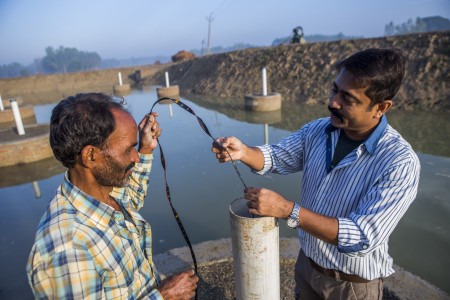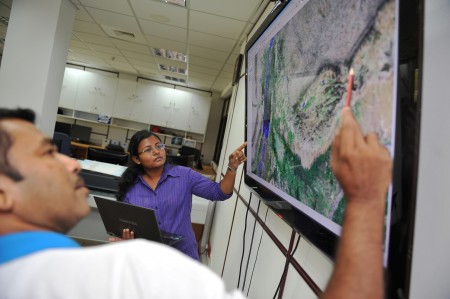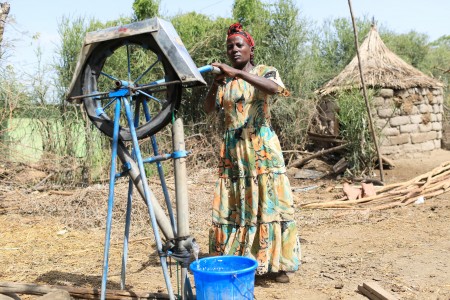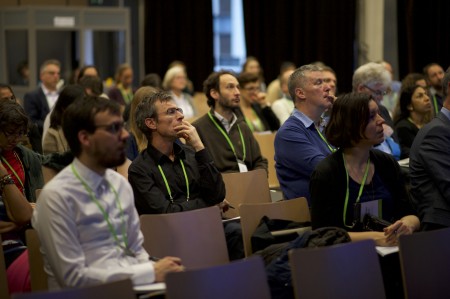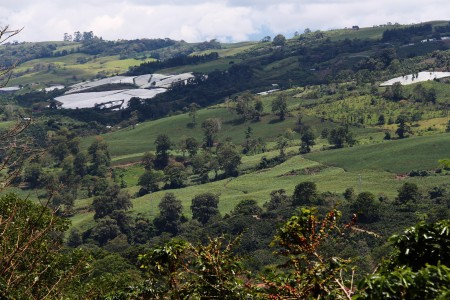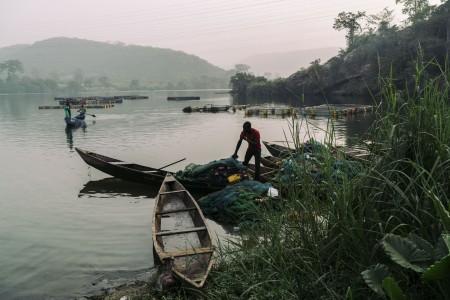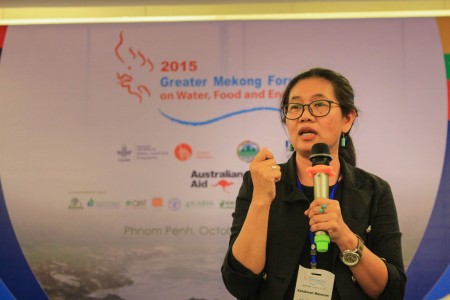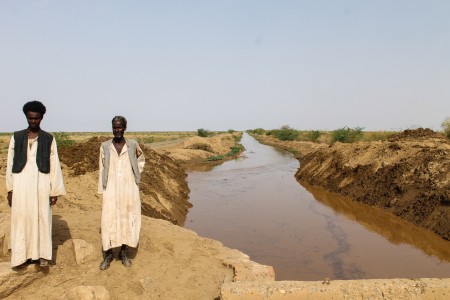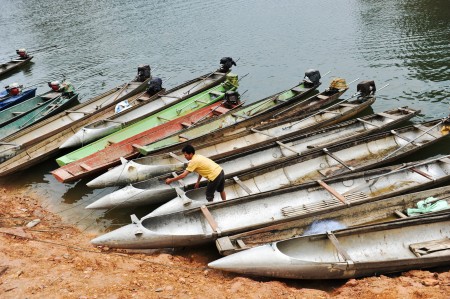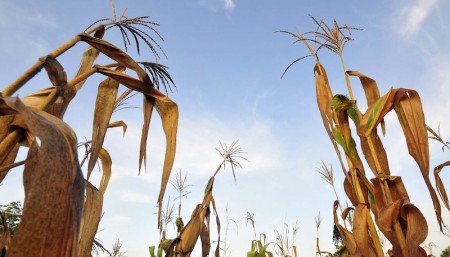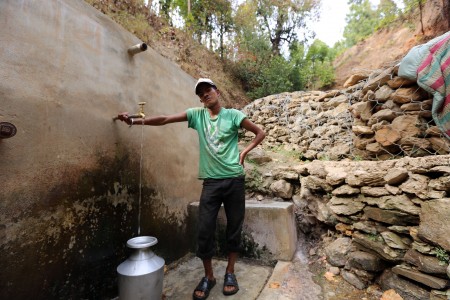The WLE 2015 Annual Report > Practical approaches to regional problems

Improved infrastructure and governance increase productivity of polders in Bangladesh
About half of the coastal zone of Bangladesh is enclosed in polders, which are low-lying tracts of land surrounded by embankments incorporating water control structures, or sluice gates. Constructed in the 1960s and 70s, the polders were built to protect the people who depend on the land for their livelihoods from saline water intrusion and tidal floods. To these ends, the polders have been somewhat effective, but despite continued investment in the physical infrastructure of the sluice gates and embankments, poverty in the polders is rampant and agricultural productivity is low.
Scientists from the CGIAR Research Program on Water, Land and Ecosystems (WLE) and its predecessor, the CGIAR Challenge Program on Water and Food, identified poor water management as the major constraint to adoption of improved production systems in the polders. In particular, conflicting interests of water users within the polders leads to uncoordinated water drainage. This lack of coordination prevents the production of high yielding, shorter duration rice varieties and the timely establishment of dry season crops.
By introducing technical solutions alongside new ways of collectively managing and governing sub-polders, the project has been able to increase agricultural and economic productivity and provide proof of concept. The project worked with local villages to implement the infrastructure improvements that were needed, and to collectively agree on which high yielding varieties of rice and fish would be farmed in the wet season, as well as which high value crops would be grown in the dry season.

Importantly, these interventions coincided with collectively made crop and water management decisions that would allow all farmers to benefit. Small water management units were delineated based on existing rural infrastructure and modified a bit to help farmers have control over and be accountable for their own small production areas. This reduced the number of conflicts stemming from who controlled the sluice gates and who was in charge of making decisions about draining or introducing tidal water.
The project has been so successful that USAID has agreed to fund a new initiative that builds on the work. This new project will work with the local communities from the entire pilot sub-polder to evaluate various cropping options with climate resilient and nutritious crops and further unlock the productive potential of the region.
Learn more
This project is part of WLE's work in its Ganges focal region. Established in 2015, the research for development projects in the focal regions are designed to address local challenges to sustainable intensification of agriculture. The projects are led and carried out by local partners.
Agriculture 2.0:
towards a global revolution
for sustainabilitywater, land and ecosystems research highlights
2015 – 2016
A message from Johan RockströmWLE Steering Committee Chair
Agriculture 2.0
Current farming practices use 70 percent of the Earth’s fresh water, degrade 40 percent of land and contribute to 30 percent of greenhouse gas emissions.
But there is a better way: putting sustainability at the center of our food systems will not only reverse climatic degradation, but also accomplish the productivity that is necessary to feed 9 billion people by 2050.Sustainability is not just a necessity. It is an untapped opportunity for improving the livelihoods of male and female smallholders farmers, ensuring the productivity of the land into the future, and better harnessing the services provided by our ecosystems.
The CGIAR Research Program on Water, Land and Ecosystems (WLE) is doing its part to make the sustainable intensification of agriculture a reality by producing evidence-based solutions for water and land management via partnerships that span nationalities, sectors and disciplines.
We invite you to explore highlights from WLE’s work below.
in 2015 wle: field tested 62 technologies and natural resource management practices, helped 125,000 farmers to apply new technologies or management practices, supported improved technologies or management practices on 2.5 million hectares
Solutions for sustainable intensification of agriculture
In 2015 WLE: established 41 multi-stakeholder platforms and influenced 200 policy processes
Engaging with the global agenda
Practical approaches to regional problems
WLE in 2015 had 110,000 website visits and 43,000 views on CG-space and published 141 ISI publications and 94 open access publications
